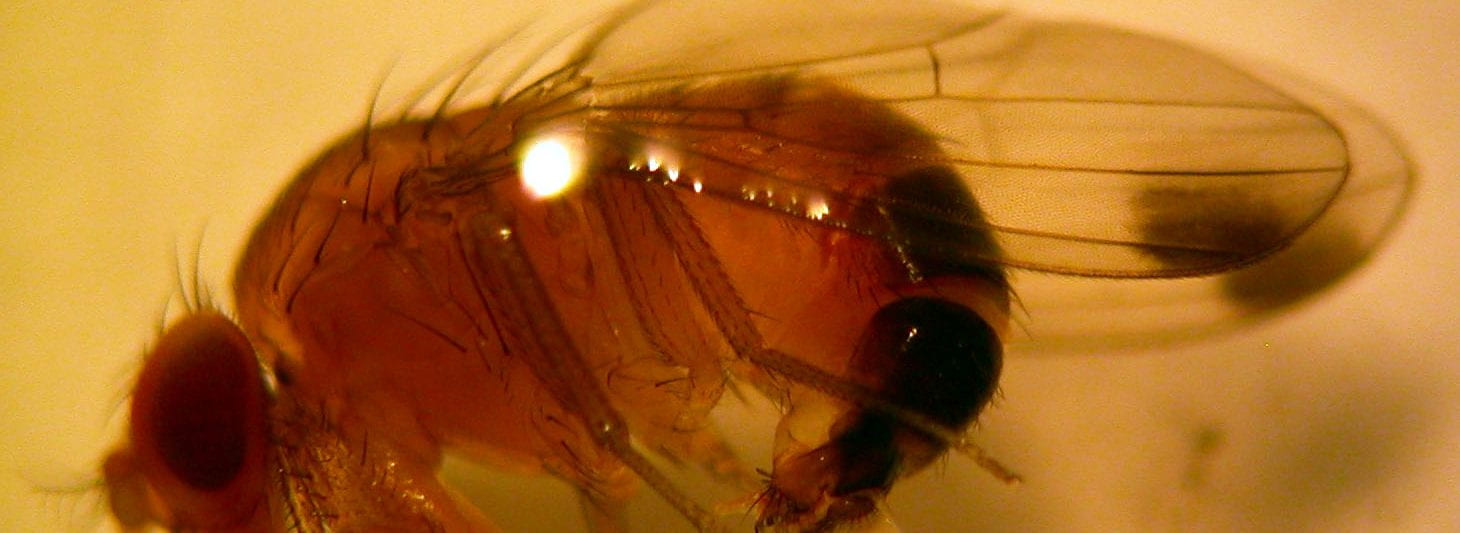
As of August 9, 2018, all 35 SWD trapping sites have sustained catch of SWD in the 23 counties in New York where monitoring was taking place. First trap catch across the New York State network spanned 72 days, from May 22 (Erie County) to August 2 (Herkimer County). All sites used the Scentry trap and lure.
This year brought fewer reports of severe infestations to my attention, than in 2017. It may have been the hot weather, the hot winds, the cold nights in spring, the drought. Although we saw early arrival of SWD in 2018, there wasn't the rapid, consistent build-up nor the early sustained catch as seen in 2017.
High pressure from SWD always builds in late summer. Those of us continuing to monitor SWD in berries are catching 100-200 SWD per trap in the week ending August 28. SWD is likely distributed across the state and soft, late-season fruits, such as fall raspberry, late blueberry varieties, plums, peaches, and pears may be at risk of infestation. To prevent fruit infestation now, if fruit is to remain hanging for weeks to come, susceptible fruit should be protected with an insecticide program.
Protect crops from SWD- (SWD hosts)
- late-summer-ripening raspberry, blueberry, blackberry, elderberry
- monitor for infestation in less susceptible fruits: ever-bearing strawberries, thin-skinned grapes, peaches, plums and prunes with salt flotation
Management tactics- (SWD management)
- timely insecticide sprays (berries) (tree fruit and grapes)
- rotate active ingredients—read and follow insecticide label directions.
- weed management
- canopy management
- clean picking
- remove or spray dropped fruit
Find out more about SWD on the Cornell Fruit Resources SWD pages.
Please join me in thanking those who contributed time and effort to the 2018 SWD trap network!
- Amy Ivy, CCE Eastern NY Horticulture Program (Clinton and Essex County traps)
- Bernie Armata, CCE Association of Herkimer County (Herkimer County traps)
- Dave Thorp, CCE Association of Livingston County (Livingston County traps)
- Don Gasiewicz, CCE Association of Wyoming County (Wyoming County traps)
- Faruque Zaman, CCE Association of Suffolk County (Suffolk County traps)
- Jim O’Connell, CCE Association of Ulster County (Ulster County traps)
- Juliet Carroll, Nicole Mattoon and Ryan Parker, CCE NYS IPM Program (Cayuga, Onondaga, Schuyler and Wayne County traps)
- Laura McDermott and Natasha Field, CCE Eastern NY Horticulture Program (Albany, Columbia, Rensselaer, Saratoga, Schenectady and Washington County traps)
- Peter Jentsch and Zayd Normand, Hudson Valley Laboratory (Dutchess and Ulster County traps)
- Sharon Bachman, CCE Association of Erie County (Erie County traps)
- Shona Ort, CCE Association of Chemung County (Chemung County traps)
- Tess Grasswitz, CCE Lake Ontario Fruit Program (Niagara and Orleans traps)


Sprayed for SWD 5X starting July 24 (late for Schenectady County) alternating between Brigade & Malathion 57. Little evidence of SWD until mid August in one older shady row. Guess we dodged a bullet. Thanks for the trapping results and warnings throughout the season.
Should anyone be interested, SWDs are out in full force in Steuben co. (Campbell). My raspberries, strawberries and blueberries are all conveniently growing alongside each other. They seem to appreciate the situation.
You're welcome!
We are coming to realize how very important the set of crops grown on a farm and their proximity to one another is to managing this insect. Thank you for providing information on SWD in Steuben County.
SWD pressure in blackberries in CA (Watsonville area)is higher this year due to the weather-related late and prolonged growing season. We are mass trapping (sugar-yeast solution) to reduce populations in addition to vigilance with our spray program, timely harvests and field sanitation. Since we've started mass trapping, our rejections at the cooler have decreased.
Thank you for sharing your experiences with us.